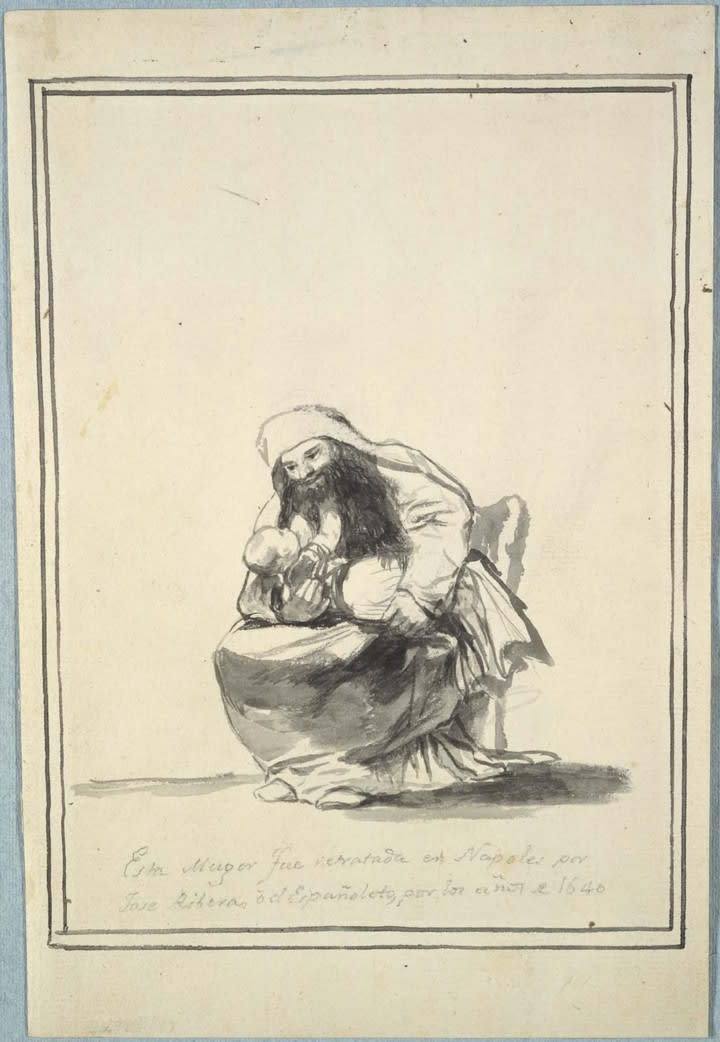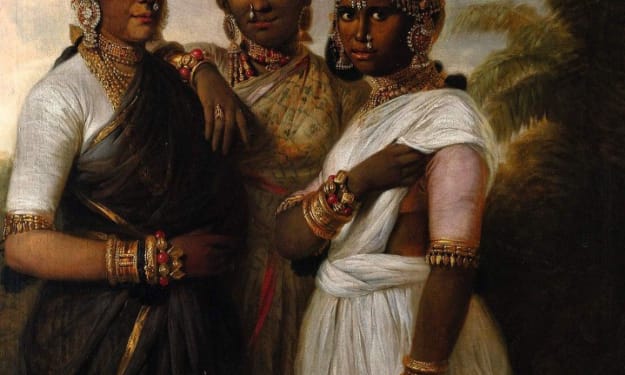The Breastfeeding Bearded Woman of Abruzzi
A classic example of gender fluidity long before we could imagine

In the 21st century, the world has started embracing gender fluidity and being more sensitive in not putting a person into strict categories of female or male. The question is - if we move back in time to almost 400 years, how did the societal norms evolve in both identity and expression?
Let's dive into the definition of gender fluidity -
Gender fluidity refers to change over time in a person's gender expression or gender identity, or both. That change might be in expression, but not identity, or in identity, but not expression. Or both expression and identity might change together.
- Sabra L. Katz-Wise, PhD
Magdalena Ventura (or The Bearded Woman), also known as La Mujer Barbuda in Spanish is a 1631 oil painting by the Spanish artist Jusepe de Ribera. At first, glance, even though Ventura's facial features conform to masculine identity, breastfeeding her newborn gives a subtle clue of revealing to the viewer that Ventura is anatomically a woman.
Ventura might not have deliberately altered her gender identity but the unusual painting put our visual sensory engaged in the artwork.
Another question that circles our mind is - was the painting a mockery of Ventura's physical appearance during the 17th century?
Magdalena Ventura's Composition
Ventura's broad stature, long beard, hairy and strong hands, wearing a Tabliah topi, and visible hair loss on her temples define her masculinity. In fact, her clothes are finely woven but look absolutely gender-neutral; evoking a sense of male identity.
Ventura's husband is standing behind her right shoulder who looks less of a man than she does. A smaller beard and a slightly meek physique.
Honestly, the stone tablet to the left side of Ventura gives us the whole summary of this enigmatic painting-
The inscription describes "The Bearded lady of Abruzzi" as "a great wonder of nature" who bore her husband three sons before sprouting a bushy, undeniably masculine beard at the age of thirty-seven.
Ribera painted this while he permanently moved to the Kingdom of Naples (which was then part of the Spanish empire).
How this painting was perceived
Art historians believe that Ribera created the painting with the utmost dignity and naturality. Ventura was biologically born as a female who might have a hormonal disorder and hence an excessive hair growth on her face. Ribera treated the subject with sensitivity and empathy. The inscription "a great wonder of nature" in the painting proves the authenticity and intention of the artist in the time when there was no concept of progressive mindset, let alone of gender revolution.
Even though the painting might have been perceived as weird, grotesque, or mocked towards the female gender, the painter depicted Ventura in her absolute originality.
The influence of Caravaggio was well noted in Ribera's style of painting. Emulating the chiaroscuro style and keeping light on the main protagonist and shades of dark around her were visible in this artwork.
Last thoughts

In the 18th century, a sudden interest sparked in hirsutism (a serious hormonal disorder that causes excessive hair growth in women), and prints of bearded ladies were found in England. Francisco Goya was highly inspired by the painting and created a sketch - Bearded Woman With Child in the 18th century.
Ribera respected Ventura's originality and represented her enigma and natural wonder into the painting that immortalized her. Ribera was far ahead of his times and broke the conventional barriers to make Ventura a local celebrity. The back story behind this artwork might help us relate to the deep undertones of psychology and emotions attached to this piece.
If someone does not fit our expectations, their uniqueness has to be recognized for what it is.
References-
1. Gender fluidity: What it means and why support matters
2. The Bearded Woman of Abruzzi: a 17th-century hero of gender fluidity
If you like what you read, please check our Youtube channel Frame of Reference.
About the Creator
Kamna Kirti
Art enthusiast. I engage with art at a deep level. I also share insights about entrepreneurship, founders & nascent technologies.
https://linktr.ee/kamnakirti






Comments
There are no comments for this story
Be the first to respond and start the conversation.